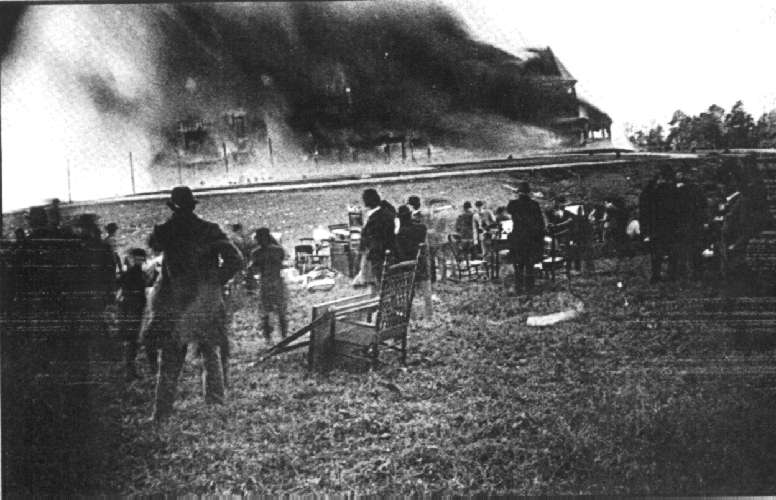
Designed by Jacob Lott Ludlow in 1890, West End is one of North Carolina’s finest examples of a turn-of-the-century streetcar suburb. Ludlow was the Town of Winston’s first City Engineer. Originally conceived as a resort and residential community, the West End was laid out by Ludlow to take full advantage of the hilly terrain ofthe aria. Dramatically curving streets, terraced lawns, and park areas were designed in strict contrast to the grid pattern of the remaining areas of the city. The Zinzendorf Hotel was to be the focal point of the picturesque suburban area. Located on one of the highest elevations in the Town of Winston, the hotel was to be the center of the new resort community. The Zinzendorf opened in May 1892.unfortunately disaster struck on December 1, 1892, when a fire destroyed the hotel.
After the fire, a decision was made that the hotel would not be rebuilt. The ensuing development in West End became totally residential. Following Ludlow’s design, West End developed through the 1920’s into an upper and upper-middle class residential suburb.
The major style of architecture incorporated in the West End in its early years of development were Queen Anne, Colonial Revival, and Neoclassical Revival. In the 1920’s, an assortment of styles were built, including later Colonial Revival styles, Craftsmen style homes, bungalows, apartments and churches.
Consisting primarily of frame structures, the building materials used within the district are enhanced by elaborately designed curvilinear streets set off by beautifully terraced lawns, retaining walls, steps, and granite curbs. Several park settings add charm and interest to the lush landscape of the West End. The important architectural and historical heritage of the West End was recognized nationally in 1986, when the District was listed on the National Register of Historic Places.
